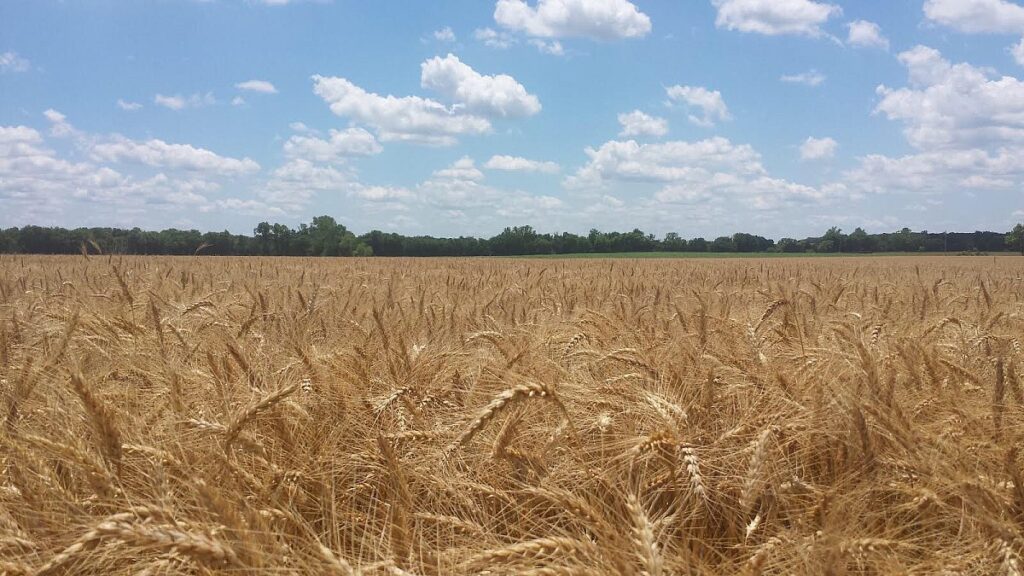
Evaluating Alabama farmland values involves taking into account soil quality and fertility factors such as texture, pH levels, and nutrient content, with practices like cover cropping to improve fertility. Topography, drainage, market trends like population growth and commodity prices, and zoning regulations also impact land appraisals. Infrastructure, amenities, and regulatory environment further influence property values. Understanding these key factors is essential for accurate and thorough farmland appraisals.
Key Takeaways
- Soil quality and fertility impact land value.
- Topography and drainage affect agricultural potential.
- Market trends and demand influence farmland value.
- Regulatory environment and zoning play a role in valuation.
- Access to infrastructure and amenities impacts land attractiveness.
Soil Quality and Fertility
Evaluating soil quality and fertility is a critical component in determining the value of farmland in Alabama. The state's diverse agricultural landscape relies heavily on the productivity of its soils. Factors such as soil texture, structure, pH levels, nutrient content, and organic matter play a significant role in gauging the overall health and fertility of the land.
Alabama's soils vary across different regions, with the Tennessee Valley featuring rich alluvial soils ideal for crop production, while the Coastal Plains offer sandy soils suitable for certain crops but requiring additional amendments. Evaluating the soil's capacity to support crops sustainably over time is essential for both current productivity and long-term land value.
Soil testing and analysis are commonly conducted to gauge fertility levels and identify any deficiencies that may affect agricultural productivity. Improving soil quality through proper management practices, such as cover cropping, crop rotation, and organic amendments, can enhance fertility and increase the land's overall value. Consequently, a thorough understanding of soil quality and fertility is paramount in the appraisal process of Alabama farmland.
Topography and Drainage
Alabama farmland appraisals also consider the topography and drainage of the land, factors that influence its agricultural potential and overall value. The topography of a piece of land refers to its physical features, such as slopes, elevation changes, and natural depressions. These characteristics play an essential role in determining the land's suitability for different types of crops, irrigation needs, and the overall ease of farming operations. Flat or gently sloping lands are often preferred for farming due to easier mechanization and water distribution, while steep terrains may be more challenging and costly to farm.
Moreover, proper drainage is essential for the best crop growth. Good drainage prevents waterlogging, which can suffocate plant roots and lead to reduced yields or crop failure. Drainage systems, such as ditches, tiles, or grading, help control water flow and manage excess water effectively. Land with well-maintained drainage infrastructure is typically more valuable as it allows for increased productivity and reduces the risk of water-related crop damage, making it a key consideration in farmland appraisals in Alabama.
Market Trends and Demand
Analyzing current market trends and demand is integral in determining the value of farmland in Alabama. By staying abreast of market fluctuations and understanding the demand for agricultural land, appraisers can make more accurate assessments. Several factors contribute to market trends and demand, including population growth, commodity prices, interest rates, and government policies that affect the agricultural sector.
| Market Trends | Impact on Farmland Value |
|---|---|
| Population Growth | Increased demand for residential and commercial development can lead to higher land prices. |
| Commodity Prices | Higher commodity prices can make farmland more valuable as farmers seek to expand production. |
| Interest Rates | Lower interest rates can make purchasing farmland more affordable, potentially increasing demand. |
Regulatory Environment and Zoning
When evaluating farmland valuations in Alabama, an important aspect to take into account is the regulatory environment and zoning regulations governing agricultural land use. The regulatory framework and zoning ordinances play a critical role in determining the permissible land uses, development potential, and overall value of agricultural properties. In Alabama, these regulations vary by county and can impact the market value of farmland.
Zoning regulations typically designate specific areas for agricultural use, residential development, commercial activities, or industrial purposes. Understanding the zoning classification of a particular farmland parcel is essential for evaluating its current and future value. Some zones may allow for agricultural activities exclusively, while others might permit mixed-use developments or even non-agricultural ventures.
Moreover, regulatory factors such as conservation easements, wetland designations, and environmental protection laws can further influence farmland valuations. Restrictions imposed by these regulations can limit the landowner's ability to develop or modify the property, affecting its marketability and value. As a result, a thorough analysis of the regulatory environment and zoning restrictions is important in accurately appraising farmland in Alabama.
Access to Infrastructure and Amenities
Considering the importance of accessibility to essential infrastructure and amenities is essential when evaluating farmland valuations in Alabama. The proximity of farmland to important infrastructure such as roads, highways, and transportation hubs can greatly impact its value. Easy access to these facilities not only enhances the convenience of farming operations but also influences the overall desirability of the land. In Alabama, access to amenities like water sources, irrigation systems, and utilities like electricity and gas are key factors that appraisers consider when determining the value of farmland. Moreover, the availability of amenities such as schools, hospitals, and shopping centers can also play a role in evaluating the attractiveness of farmland for potential buyers or investors. Areas with better access to infrastructure and amenities are likely to command higher prices due to their convenience and potential for increased productivity. Hence, thorough evaluation of these factors is critical in accurately appraising farmland values in Alabama.
Frequently Asked Questions
How Do Environmental Factors Such as Air Quality and Water Contamination Affect Farmland Appraisals in Alabama?
Environmental factors such as air quality and water contamination play an important role in shaping farmland appraisals in Alabama. These elements can greatly impact the value of agricultural land, reflecting the significance of evaluating and mitigating their effects.
Are There Any Specific Government Programs or Subsidies That Impact the Value of Farmland in the State?
Government programs and subsidies can greatly impact the value of farmland in Alabama. These initiatives can offer financial support, tax incentives, or resources that influence land prices. Understanding these programs is essential for accurate farmland appraisals.
How Do Natural Disasters Such as Hurricanes or Droughts Impact Farmland Appraisals?
Natural disasters, like hurricanes or droughts, can greatly impact farmland appraisals. Crop damage, soil erosion, and infrastructure destruction can lead to decreased land value. Proper risk management strategies and insurance coverage are essential for mitigating these effects.
What Role Do Local Agricultural Practices and Traditions Play in Determining the Value of Farmland in Alabama?
Local agricultural practices and traditions in Alabama greatly influence farmland values. These factors encompass crop choices, farming techniques, and historical significance. Understanding and incorporating these elements into appraisals is essential for accurately valuing farmland in the state.
Are There Any Emerging Technologies or Innovations in Agriculture That Are Influencing Farmland Appraisals in the State?
Emerging technologies and innovations in agriculture are greatly impacting farmland appraisals in Alabama. Tools like precision agriculture, drone technology, and data analytics are enhancing productivity and efficiency, leading to higher property values in the state.
Conclusion
To sum up, the assessment of farmland in Alabama is impacted by various factors such as soil quality, topography, market trends, regulations, and access to infrastructure. These elements play a vital role in determining the value of farmland and are significant considerations for both buyers and sellers in the agricultural real estate market. Understanding and analyzing these influential factors is essential for making informed decisions in the appraisal process.
